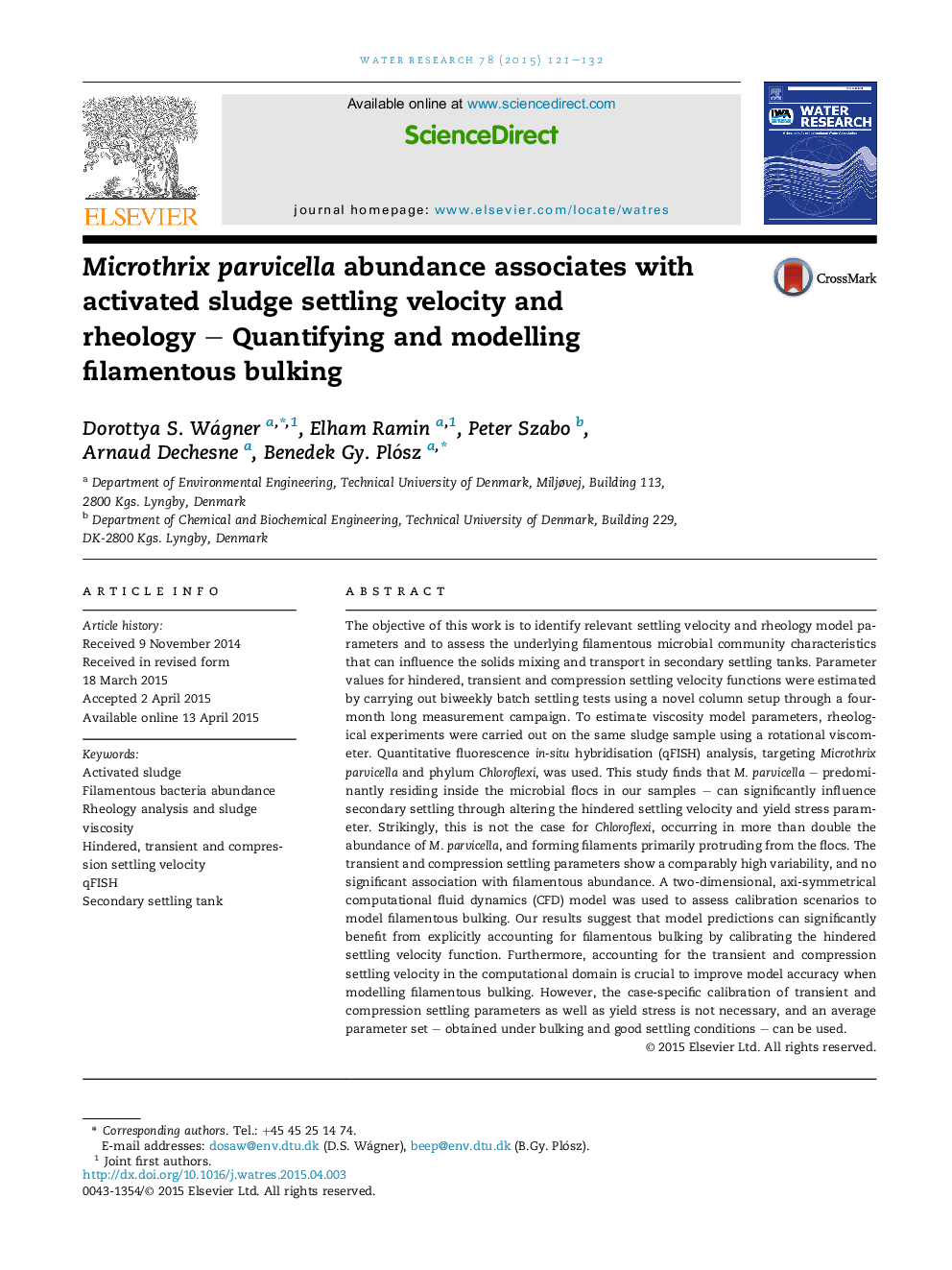| کد مقاله | کد نشریه | سال انتشار | مقاله انگلیسی | نسخه تمام متن |
|---|---|---|---|---|
| 4481120 | 1623090 | 2015 | 12 صفحه PDF | دانلود رایگان |

• Filament location in floc rather than abundance affects zone settling and viscosity.
• Low efficiency of using SVI as a surrogate to quantify filamentous bulking.
• Methods targeting total filament length are limited in quantifying bulking.
• Filamentous abundance does not associate with compression and transient settling.
• Practical calibration protocol for modelling filamentous bulking.
The objective of this work is to identify relevant settling velocity and rheology model parameters and to assess the underlying filamentous microbial community characteristics that can influence the solids mixing and transport in secondary settling tanks. Parameter values for hindered, transient and compression settling velocity functions were estimated by carrying out biweekly batch settling tests using a novel column setup through a four-month long measurement campaign. To estimate viscosity model parameters, rheological experiments were carried out on the same sludge sample using a rotational viscometer. Quantitative fluorescence in-situ hybridisation (qFISH) analysis, targeting Microthrix parvicella and phylum Chloroflexi, was used. This study finds that M. parvicella – predominantly residing inside the microbial flocs in our samples – can significantly influence secondary settling through altering the hindered settling velocity and yield stress parameter. Strikingly, this is not the case for Chloroflexi, occurring in more than double the abundance of M. parvicella, and forming filaments primarily protruding from the flocs. The transient and compression settling parameters show a comparably high variability, and no significant association with filamentous abundance. A two-dimensional, axi-symmetrical computational fluid dynamics (CFD) model was used to assess calibration scenarios to model filamentous bulking. Our results suggest that model predictions can significantly benefit from explicitly accounting for filamentous bulking by calibrating the hindered settling velocity function. Furthermore, accounting for the transient and compression settling velocity in the computational domain is crucial to improve model accuracy when modelling filamentous bulking. However, the case-specific calibration of transient and compression settling parameters as well as yield stress is not necessary, and an average parameter set – obtained under bulking and good settling conditions – can be used.
Figure optionsDownload high-quality image (189 K)Download as PowerPoint slide
Journal: Water Research - Volume 78, 1 July 2015, Pages 121–132